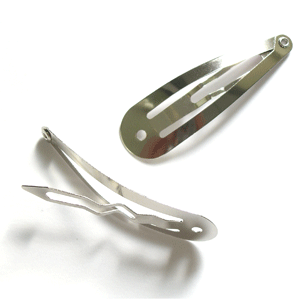October 11th, 2009 by Bongi in Better Health Network, True Stories
No Comments »

 I recently read a post that reminded me of an incident. depending on which side of the eyelid you found yourself that day, it could have been funny…or not.
I recently read a post that reminded me of an incident. depending on which side of the eyelid you found yourself that day, it could have been funny…or not.
I was doing casualty sessions after hours. It was a way of making ends meet while I was specialising, but mostly I just hated it. Anyway one night, between the snotty noses and neurotic parents a patient actually came in with a casualty-worthy complaint. He had a small laceration on his forehead. We decided to glue it together with dermabond because it was so small. I decided to leave it to the sister. After all the unit was full to overflowing with snotty noses and paranoid parents that I was required to work through and get rid of.
After a while the sister came to me. She had terror written all over her face. Read more »
*This blog post was originally published at other things amanzi*
October 8th, 2009 by RamonaBatesMD in Better Health Network
No Comments »

I want to share this section of the old textbook, A Text-Book of Minor Surgery by Edward Milton Foote, MD (1908) mainly because I want to share the photo of the “angular knife for incision of the tympanic membrane” with you.
Otitis Media
This is a common disease of childhood, usually following a cold in the head. The prominent symptom is earache. Every physician ought to be able to recognize the bulging outward of the membranum tympani and to relieve the pressure by incision of the membrane at the most favorable situation – viz., the inferior and posterior portion. The introduction of warm olive oil into the external meatus will sometimes relieve pain, and the application of external heat may also be tried; but the pain of a severe earache, unless relieved by puncture of the membrane, usually demands the internal administration of morphine. Read more »
*This blog post was originally published at Suture for a Living*
October 2nd, 2009 by KevinMD in Better Health Network, Opinion
No Comments »

“Psychiatrists may be the last batch of physicians who are still granted a luxurious amount of time with patients.”
So says Maria, a psychiatrist who blogs over at intueri.
And because time is so undervalued in our health system, some doctors are relying on psychiatrists to counsel patients in the hospital. She cites an example with surgeons, saying that “it is entirely unfair to both the patient and the psychiatrist for the surgeon to completely emotionally ‘turf’ the patient.”
Read more »
*This blog post was originally published at KevinMD.com*
September 27th, 2009 by Bongi in Better Health Network, True Stories
No Comments »

 Of the things I encounter in my work, the one I find most disturbing is family murders. For some reason they happen with too much frequency in our country. It seems that some people, when life is too much for them are not happy to only put a bullet through their own head, but they feel the need to wipe out their entire family first. In my opinion it is a dastardly and cowardly act for which there is no excuse…ever.
Of the things I encounter in my work, the one I find most disturbing is family murders. For some reason they happen with too much frequency in our country. It seems that some people, when life is too much for them are not happy to only put a bullet through their own head, but they feel the need to wipe out their entire family first. In my opinion it is a dastardly and cowardly act for which there is no excuse…ever.
The last one I was indirectly involved in was a typical story of a man that had lost it. He killed himself. But just before doing that he shot his wife and two children. His little girl made it to the hospital. I was asked to evaluate her, but she died before I even got to her. I was so disturbed I decided I didn’t want to see the body. I did, however see the scan. Besides the two bullet wounds through the head, the thing that struck me most were the two hair clips clearly visible on the scan in her hair on the back of her head. it was somehow disturbingly poignant and it stayed with me for some time.
Read more »
*This blog post was originally published at other things amanzi*
September 24th, 2009 by RamonaBatesMD in Better Health Network, Medical Art
No Comments »

The surgical dressings section of the old surgery text, A Text-Book of Minor Surgery by Edward Milton Foote, MD, I first mentioned on Monday is very interesting.
Cotton
Cotton in its raw state has very little absorbent power because of the oil and gum with which its fibers are covered. When the cotton has been bleaches by chemicals, and the oil extracted, its absorbent power is very great. This fact, together with its cheapness and lightness, the toughness of its fiber, and its ready sterilization by steam or dry heat make it almost the ideal material for surgical dressings.
Unbleached Cotton
This is cotton in its natural state, freed from dirt, combed, and put up in pound rolls. It is non-absorbent and has a greater elasticity than the absorbent cotton. It is therefore preferable as a padding for splints, and to diffuse the pressure of a non-elastic bandage….It costs about thirty five cents a pound…..
Absorbent Cotton
as supplied by the manufactures of surgical dressings, is freed from dirt, gum, and oil, combed and sterilized, and so wrapped in tissue-paper that with a little care it remains aseptic until it is all used. It is furnished in packages of various sizes, from a half ounce to one pound, costing thirty-five cents a pound in pound packages. On account of its lack of elasticity, it is inferior to unbleached cotton as a padding for splints, etc.
Dry cotton is not a suitable material to bring into contact with a wound either during operation or afterward. In the former case its fibers are likely to stick to the wound, and also to the fingers of the operator. In the latter case, if the discharge is small, it is likely to evaporate and seal the cotton to the wound or to the surrounding skin with a scab which is difficult of removal. If cotton is used for sponging, during an operation, balls of suitable size should first be saturated with saline or some antiseptic solution, and then squeezed dry.
Substitutes for Cotton
Lamb’s Wool
Lamb’s wool has great elasticity, does not become soggy when exposed to moisture, and absorbs readily oily substances and glycerids. When cleaned and sterilized it is therefore an excellent material for vaginal tampons.
[So very different from today!]
Gauze
Bleached absorbent gauze is the most important item in surgical dressings. The firmness of the material varies according to the number of threads to the inch. The quality should be selected according to the purpose for which it is desired. Thus a gauze which has 24 X 32 threads to the square inch is suitable for sponges or for dressings, but has not sufficient firmness to make a good bandage. On the other hand, a gauze with 40 X 44 threads to the square inch, used for bandages, is unnecessarily expensive when used for sponges or dressings. It is, however, an unwise economy to select for sponges and dressings a gauze with too large a mesh. Such a gauze absorbs so little that an additional quantity is required in every case, so that the total expense is very likely increased.
Gauze suitable for sponges and dressings, have 26 X 32 threads to the four to five cents a yard, by the piece of 100 yards. This price is increased to eight or even ten cents a yard when the gauze is purchased in small pieces, previously sterilized and hermetically sealed.
Unbleached Muslin Read more »
*This blog post was originally published at Suture for a Living*
 I recently read a post that reminded me of an incident. depending on which side of the eyelid you found yourself that day, it could have been funny…or not.
I recently read a post that reminded me of an incident. depending on which side of the eyelid you found yourself that day, it could have been funny…or not.













